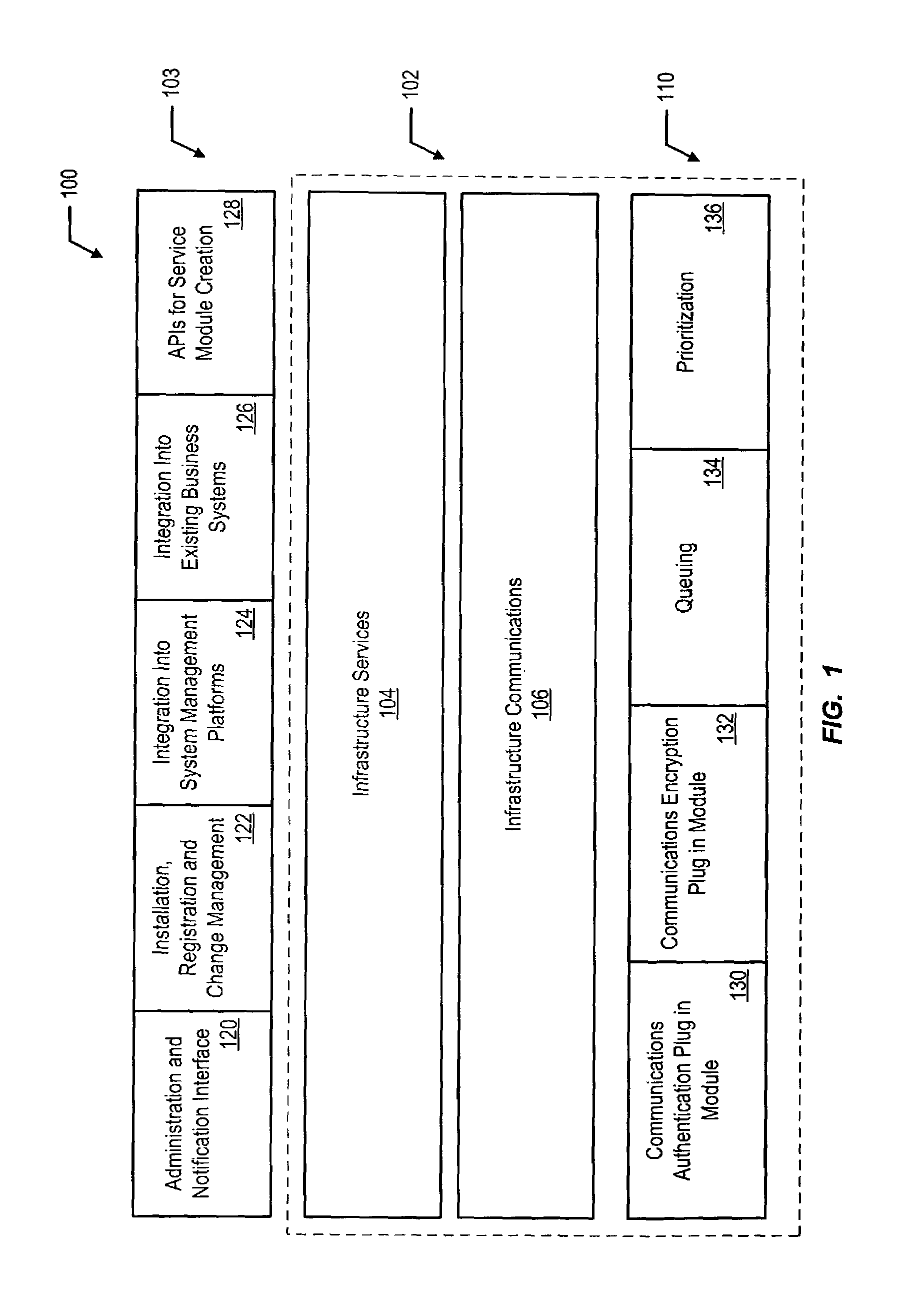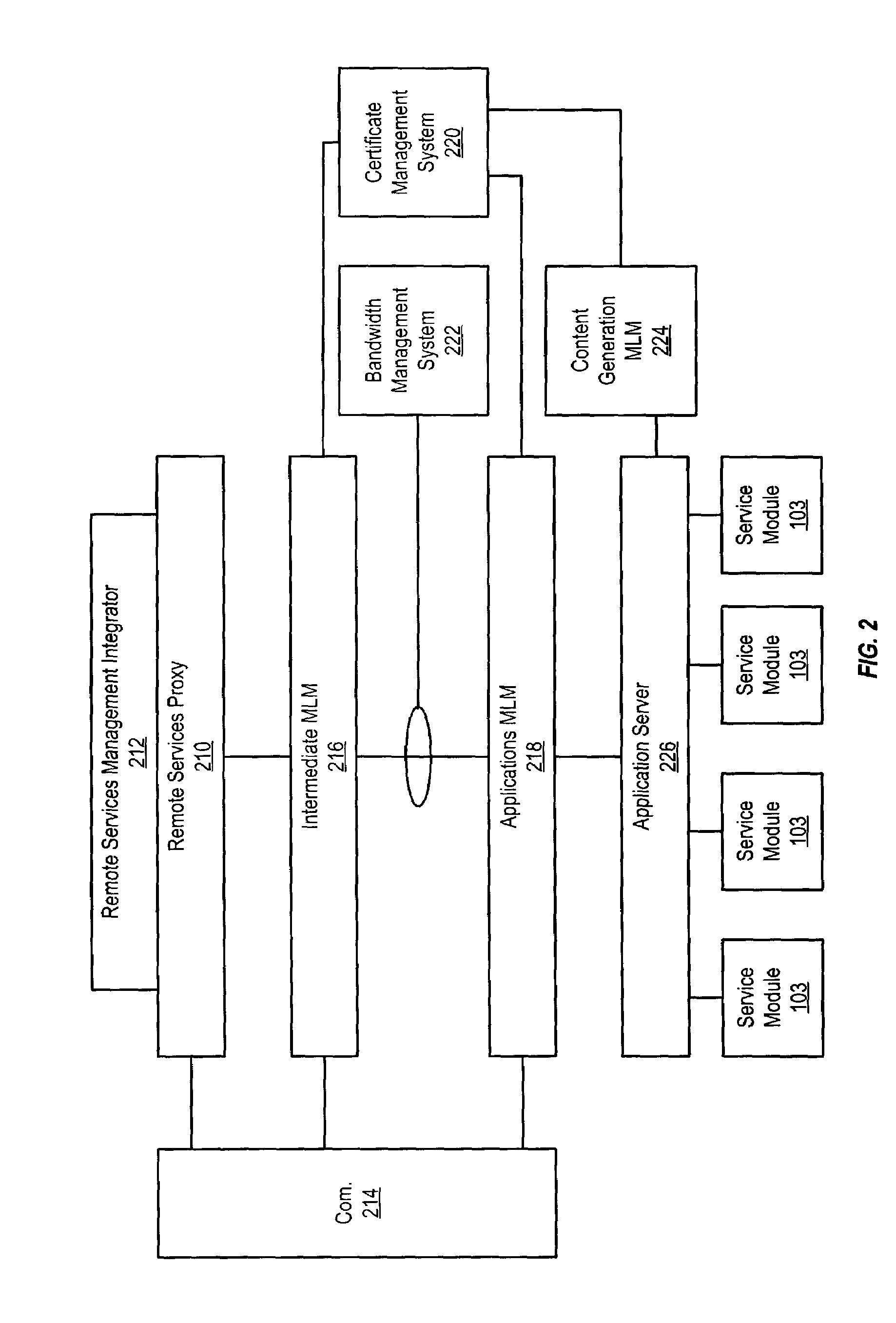Bandwidth management for remote services system
a remote service and bandwidth management technology, applied in the field of remote service delivery of computer networks, can solve the problems of reducing the overall benefit of the service provider and the customer, not having high bandwidth links, and provider not being able to provide a single integrated servi
- Summary
- Abstract
- Description
- Claims
- Application Information
AI Technical Summary
Benefits of technology
Problems solved by technology
Method used
Image
Examples
Embodiment Construction
[0047]FIG. 1 shows a block diagram of an architecture for a remote service delivery system 100 that meets the needs of both the service provider and the customer. The architecture of the present invention is modularized to provide broad support for both the customer and the service provider in terms of evolution of service functionality to the architecture and within the architecture.
[0048]The architecture is broadly comprised of the remote service infrastructure 102, a group of service modules 103 and a plurality of communications modules 110. The remote services infrastructure 102 provides reliable remote service delivery and data management. The remote services infrastructure 102 supports the needs of a service creator by focusing the service creator on the needs and the design of the service by eliminating the need for the service creator to be concerned about how data is transferred and managed to and from a customer site.
[0049]The remote services infrastructure 102 provides an...
PUM
 Login to View More
Login to View More Abstract
Description
Claims
Application Information
 Login to View More
Login to View More - R&D
- Intellectual Property
- Life Sciences
- Materials
- Tech Scout
- Unparalleled Data Quality
- Higher Quality Content
- 60% Fewer Hallucinations
Browse by: Latest US Patents, China's latest patents, Technical Efficacy Thesaurus, Application Domain, Technology Topic, Popular Technical Reports.
© 2025 PatSnap. All rights reserved.Legal|Privacy policy|Modern Slavery Act Transparency Statement|Sitemap|About US| Contact US: help@patsnap.com



